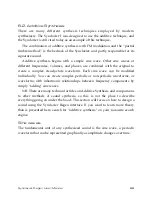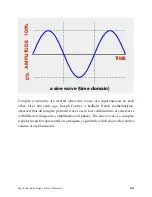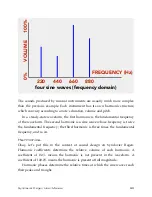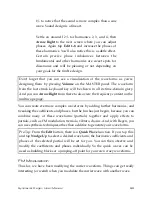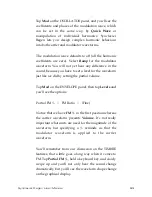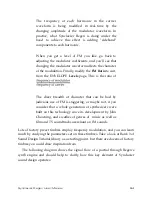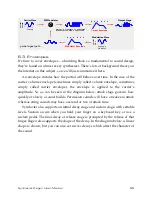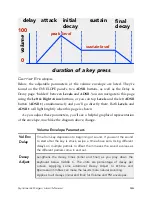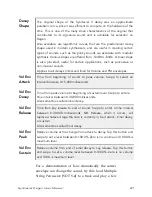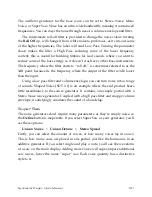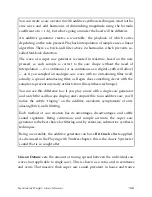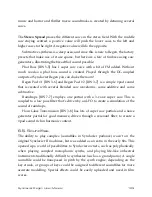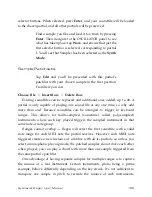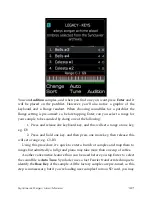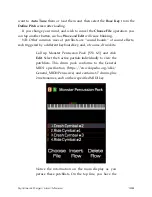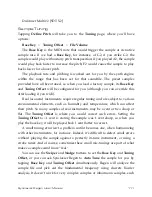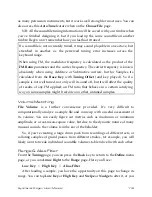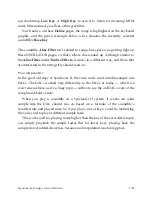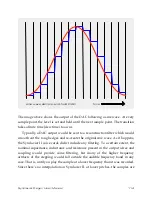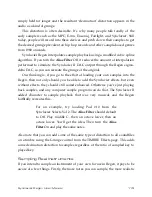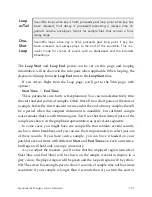
Synclavier Regen User Manual
102
You can create a saw waveform with additive synthesis techniques (start with a
sine wave and add harmonics of diminishing magnitude using the formula
coefficient of n = 1/n), but what’s going on under the hood will be different.
An additive generator creates a wavetable, the playback of which varies
depending on the note pressed. Playback interpolation of samples uses a linear
algorithm. There’s a brick-wall filter above 24 harmonics which prevents so-
called fold-back distortion.
The wave of a super saw generator is created in real-time, based on the note
pressed, so each sample is correct to the saw shape without the need of
interpolation — it’s continuous (or as continuous as a digital synth will allow)
— as if you sampled an analogue saw wave with no anti-aliasing filter (well,
actually a special antialiasing filter, as Regen does something clever with the
samples to prevent any nasty artifacts from this synthesis technique).
You can see this difference too: if you play a note with a single saw generator
and watch the oscilloscope display, and compare this to an additive saw, you’ll
notice the subtle “ringing” on the additive waveform symptomatic of anti-
aliasing (brick-wall) filtering.
Each method of saw creation has its advantages, disadvantages, and subtle
sound signature. Being continuous and sample accurate, the super saw
generator is the best choice for filtering and, by extension, subtractive synthesis
techniques.
Being a wavetable, the additive generator can have
Bit Crush
effects applied.
As discussed in the Playing with Timbres chapter, this is the classic Synclavier
sound that is so sought after.
Unison Detune
sets the amount of tuning spread between the individual saw
waves (not applicable to single saw). This is shown as a ratio, and in semitones
and cents. That massive thick super saw sound prevalent in house and trance

